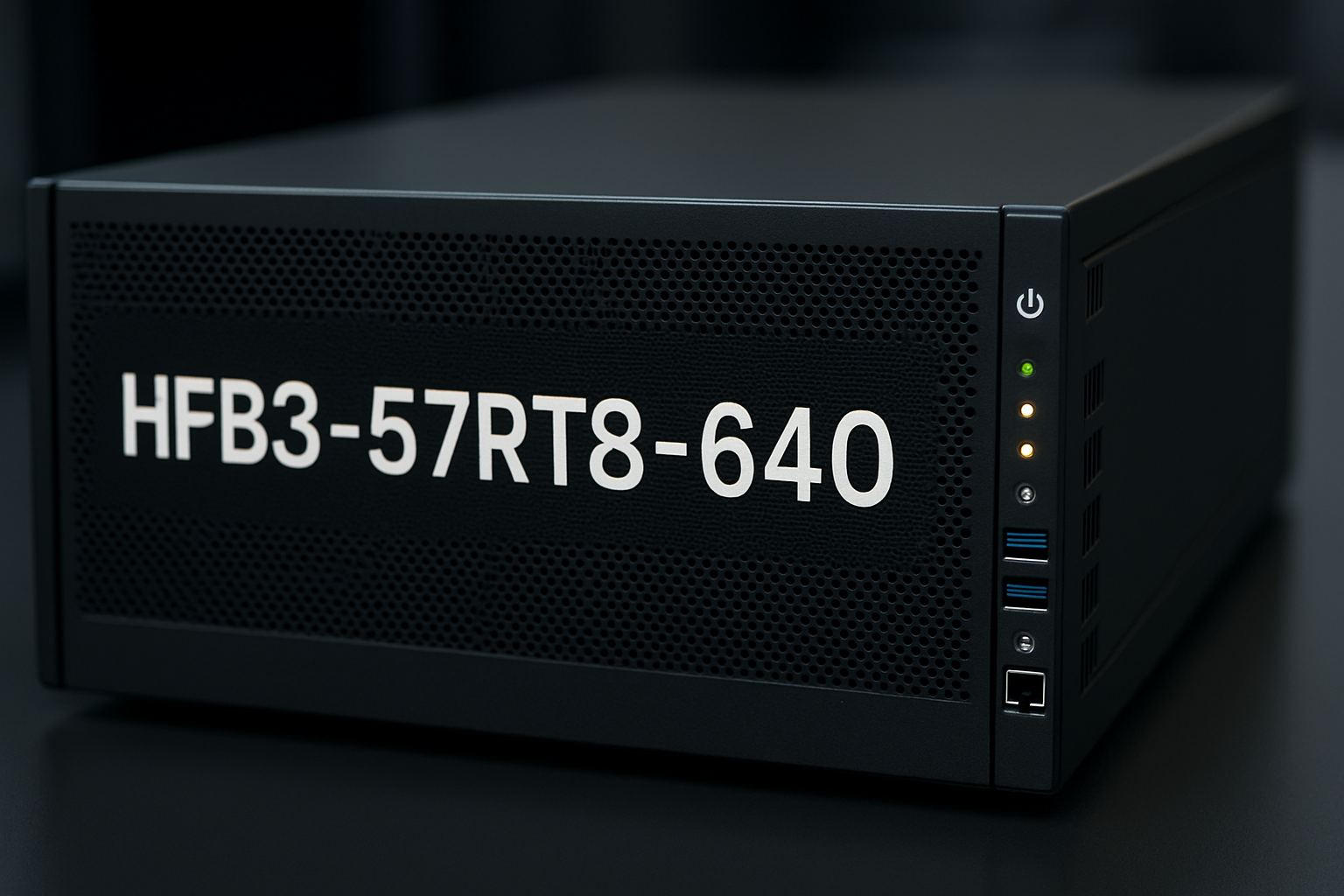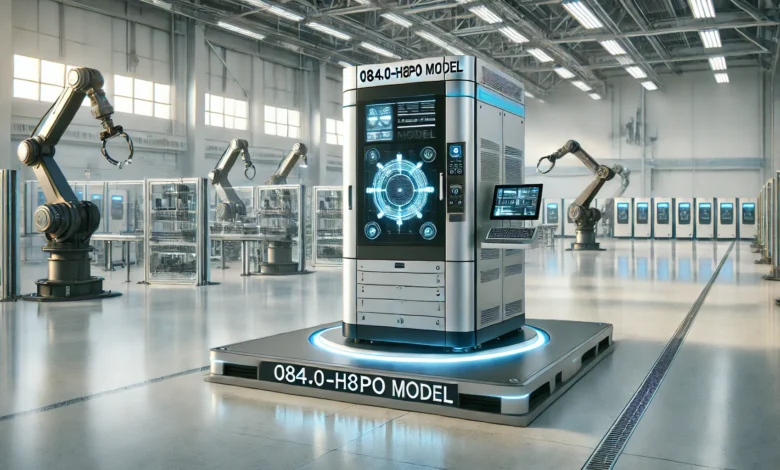Technology
HFB3‑57RT8‑64O Model: In‑Depth Review

What Is the HFB3‑57RT8‑64O Model?
Origins and Purpose
The hfb3‑57rt8‑64o model is a next‑generation autonomous AI system designed for real‑time decision‑making, data analytics, and industrial automation. Developed to handle high‑volume tasks across sectors, it integrates both cutting‑edge hardware and bespoke machine‑learning frameworks.
Target Industries
This model serves industries including manufacturing, electronics, smart cities, infrastructure management, research labs, and real‑time security surveillance systems.
Technical Specifications & Performance
Processing Speed and Architecture
The system achieves 2.8 TFLOPS of parallel processing using a 12‑layer neural network framework with approximately 850 million parameters. It delivers sub‑4 ms response times for standard operations.
Memory, Storage, and Throughput
Built with 64 GB high‑bandwidth RAM and 1 TB NVMe SSD, it ensures rapid data handling and throughput exceeding 825 GB/s in benchmark tests, well above industry norms.
Latency and Efficiency
Typical response latency is 3.2 ms, much faster than average systems (~8.5 ms). Low idle power draw (~45 W) and efficient peak consumption (~280 W) earn it high energy efficiency ratings (A‑plus levels).
Features That Make It Stand Out
Machine Learning & Neural Network Design
With proprietary algorithms integrated into a deep‑learning architecture, the model excels at pattern recognition, anomaly detection, predictive analytics, and autonomous control.
Energy Efficiency & Thermal Control
Dynamic voltage scaling, smart thermal management (keeping temps near ~65 °C), and intelligent core‑level power distribution contribute to lower operational costs and sustainable performance.
Use Cases & Applications
Industrial Automation & Manufacturing
Ideal for automating assembly lines, quality control inspection, and predictive maintenance. It reliably handles repetitive high‑precision tasks with minimal human oversight.
Smart Infrastructure & Traffic Systems
Used in smart city networks for traffic flow optimization, energy grid balancing, and real‑time monitoring in surveillance systems.
Data Analytics, Security & Research
Enables real‑time anomaly and risk detection, scientific modeling, and simulations in research environments.
Benchmark Results & Comparison
Independent Lab Testing Results
Tests show the model processes 850,000 operations/sec, supports up to 1,200 concurrent tasks, and maintains throughput far exceeding the industry average of ~420,000 ops/sec and ~512 GB/s memory bandwidth.
Versus Other Models on the Market
When measured against competitors, the hfb3‑57rt8‑64o model combines better cost-efficiency, speed, energy profile, and scalability as a turnkey platform.
Benefits for Businesses & Enterprises
Cost‑Effectiveness & ROI
Thanks to energy‑efficient architecture, reduced manual labor, and scalability, organizations gain rapid ROI and long-term cost savings.
Scalability and Customization
Modular design and configurable software stacks let enterprises scale usage as needed and tailor the system to specific workflows and environments.
Low Maintenance & Ease of Use
User‑friendly interfaces, intuitive controls, and minimal maintenance needs allow fast onboarding and integration into existing operations.
Implementation & Support Considerations
Deployment Requirements
Ideal deployment involves standardized rack configuration, high‑speed networking, cooling infrastructure to handle up to ~280 W load, and secure data integration pipelines.
Maintenance, Updates & Vendor Support
Manufacturers provide regular firmware/software updates, diagnostic tools, and dedicated technical support to ensure uptime and system reliability.
Frequently Asked Questions
Q1: What is the processing power of the hfb3‑57rt8‑64o model?
A: It delivers 2.8 TFLOPS, ideal for AI‑driven tasks at scale.
Q2: How much memory does it have?
A: Comes with 64 GB high‑bandwidth RAM plus 1 TB NVMe storage.
Q3: How fast is its response time?
A: Typical latency is around 3.2 milliseconds, enabling near‑real‑time insights.
Q4: Is it energy‑efficient?
A: Yes—idle consumption ~45 W, peak ~280 W, with energy ratings A++ to A.
Q5: What industries benefit most?
A: Manufacturing automation, smart infrastructure, predictive analytics, and R&D settings.
Q6: How does it compare to similar models?
A: It outperforms many competitors thanks to superior throughput, latency, energy efficiency, and overall cost‑efficiency.
Conclusion
The hfb3‑57rt8‑64o model presents a state‑of‑the‑art AI system designed for demanding environments. With top-tier processing speed, low latency, scalable design, and energy‑efficient operation, it offers compelling value for businesses pushing automation, analytics, or smart‑infrastructure strategies.
If you’d like comparisons to specific competing models or a deeper dive into deployment scenarios, feel free to ask!
-

 Blog2 months ago
Blog2 months agoKate Garraway’s New Partner 2024: A Fresh Chapter Begins
-

 Health2 months ago
Health2 months agoCandizi – The Ultimate Game-Changer in Wellness and Lifestyle
-

 Blog2 months ago
Blog2 months agoUnited Airlines Flight UA770 Emergency Diversion
-

 Food3 months ago
Food3 months agoCalamariere: A Tasty Seafood Delight That Shines
-

 Blog2 months ago
Blog2 months agoTractor Supply Sales Associate Job Description (2025 Update)
-

 Blog2 months ago
Blog2 months agoPowerful 7-Step Guide to هنتاوي com: Boost Organic Traffic Now
-

 Technology2 months ago
Technology2 months agoExploring the Power and Potential of the 084.0-h8po Model
-

 Culture2 months ago
Culture2 months agoHis Majesty NWBKA: A Symbol of Royalty, Culture, and Legacy
